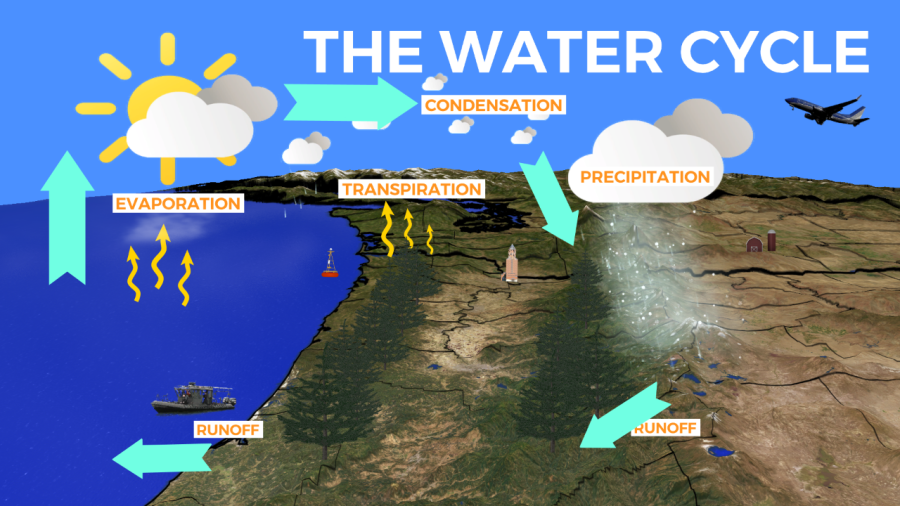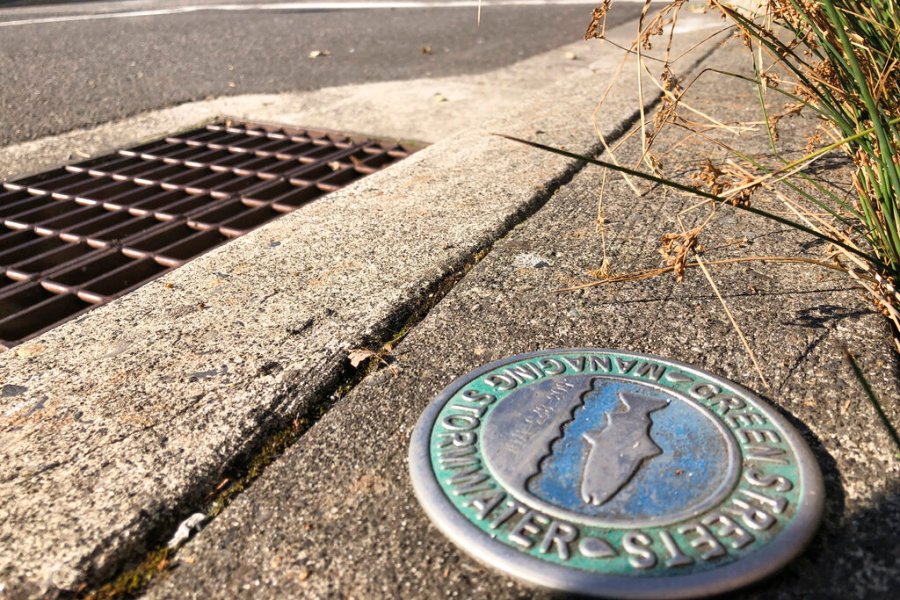PORTLAND, Ore. (KOIN) – With summer just around the corner, we are nearing our driest months of the year. We are getting close to saying goodbye to the rain and hello to the summer sunshine.
We can’t go out without a party though, right? We had a spring atmospheric river move through, bringing rain to the Pacific Northwest and leaving puddles all across the valley floor. Five days in a row of measurable rain! That left plenty of time for jumping in and over puddles, which is always a good time.


Now we have talked about the water cycle in a previous weather kids, but we haven’t discussed the local action of water around here. We have around 37 inches of rain a year and that water! Well, the water has to find a place to go, right? We have plenty of natural avenues: forests, parks, yards, dirt fields and orchards. Yet, we have a lot of locations that are paved with cement and buildings. Where does that water go? It’s going to fall on rooftops, cars and pavement. It will virtually travel across everything that you see out there, eventually finding a way to a storm drain. This is the way that we manage stormwater around here.
WATCH THE VIDEO ABOVE NOW

You know the storm drains around your neighborhood and Portland? Well those are controlled by the Bureau of Transportation (PBOT). PBOT is responsible for maintaining storm drains and responding to street flooding. They have to monitor a lot of storm drains and pipes!
“The infrastructure includes 456 miles of stormwater sewer pipe, 878 miles of combined sewer pipe (carries both stormwater and sewage), 58,000 storm drains, and 4,700 miles of streets.”
Although they are in control of the maintenance, the stormwater system is the responsibility of the Bureau of Environmental Services (BES). The folks that work here help manage the stormwater system (more below).
A FEW KEY TERMS
Stormwater: this is the water that comes from the precipitation that falls from weather events, that ultimately finds a way to the rivers and streams.
Runoff: this is the water that flows toward the streams on the surface of the ground or within the ground.
IT’S NOT ALWAYS CLEAN
Stormwater carries a lot of different types of pollutants. As you can imagine, the water will pass through a lot of materials. The stormwater can pick up dirt, silt, oil, chemicals, pesticides and trash. That can cause some harm to the local streams and rivers, aquatic life, and most definitely drinking water for humans.

You may be wondering? Well how does the water become clean?
There are natural ways that the water will filter (infiltrate) through the ground, which will ultimately help clean the water. That water will find a way back to the ponds, rivers and ground water. That is the organic way through the surface of the earth.
However, those storm drains that take in all the water around the city, those need a little help. We also do our best as citizens to make sure we keep the storm drains free of garbage, sediment and other pollutants. We make sure we don’t pour anything that isn’t clean stormwater into these drains. We have to do our work too!
WHAT IF IT NEEDS TO BE TREATED?
There are also stormwater facilities, that capture and filter runoff! Isn’t that good news! These facilities will monitor the water quality and do what they can to protect and prevent pollution. Not only that, these facilities will help plan for the future, hoping to keep tabs on our water. This is called watershed protection and planning.
TAKE THIS MOMENT TO ENJOY A PUDDLE SPLASH
Before we wrap this up, we do want to talk about the safety of playing in stormwater.
Playing in the rain, especially a warm summer shower, is totally a blast. It is completely harmless to put the rain gear on and to get out there and enjoy the drops. Even after a rain event, you may want to jump around some of the puddles in the drive way or at the park. No big deal there! Make sure you’re careful because the ground and objects may be slick. You will want to be with a parent or adult if you’re going to be playing around water or in the rain (no thunderstorms!).
Playing in stormwater becomes dangerous when you decide to play in sewer areas, retention ponds, or flood water. This is the type of situation that is not safe.
DON’T FORGET TO CHECK OUT THIS LESSON ABOUT RAINDROP SHAPES